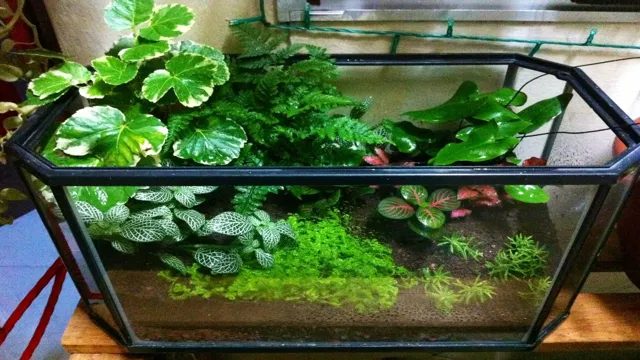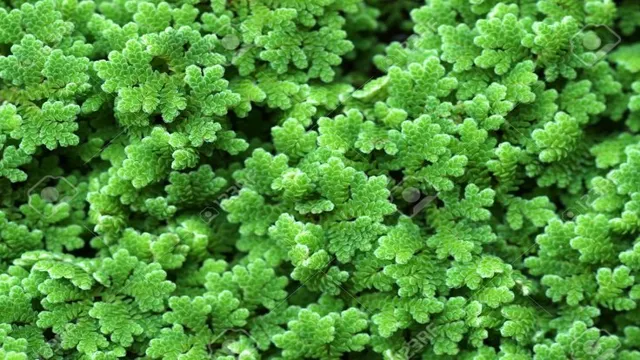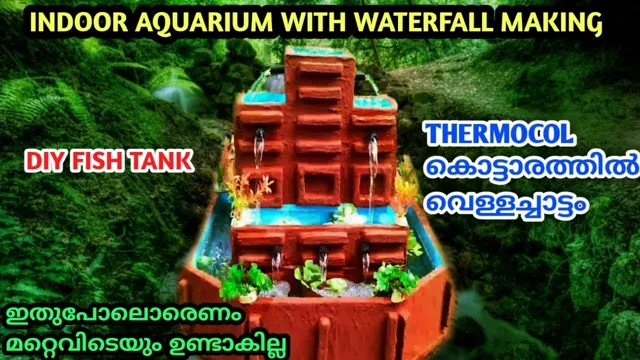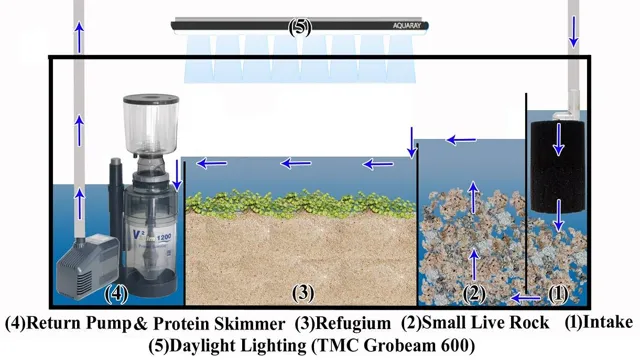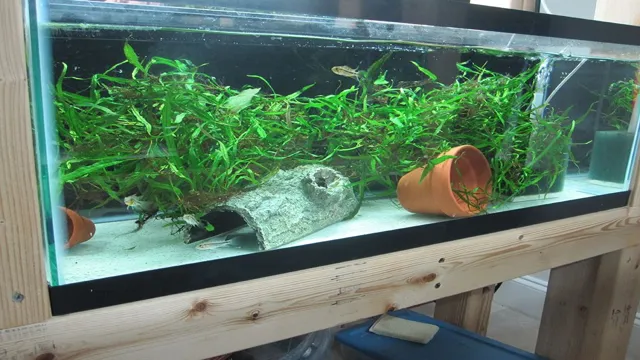Have you ever wondered how to build an aquarium terrarium? Maybe you’ve seen some gorgeous setups on social media or in a friend’s home and thought, “I want that!” Well, you’re in luck because building your own aquarium terrarium is easier than you might think. With a little bit of planning and patience, you can create a beautiful underwater oasis that doubles as a stunning piece of home decor. Think of the aquarium terrarium as a mini ecosystem.
It’s a combination of aquatic and terrestrial plants, rocks, sand, and water that work together to create a self-sustaining environment. The key is finding the right balance of each element and placing them in a way that mimics a natural habitat. This will not only make your aquarium terrarium look stunning but also help your plants and aquatic life thrive.
In this step-by-step guide, we’ll cover everything you need to know to build your own aquarium terrarium, including the materials you’ll need, plant and animal options, and how to set it up for success. Whether you’re a seasoned aquarist or just starting, building an aquarium terrarium is a fun and rewarding project that will bring a little piece of nature into your home. So, let’s dive in and get started!
Introduction
Building an aquarium terrarium can be a fun and rewarding project for those interested in having a unique and low-maintenance pet. The first step in building an aquarium terrarium is to choose the right container. This can be either a fish tank or a glass terrarium, depending on what you prefer.
Next, add a layer of substrate to the bottom of the container. This can be gravel, sand, or soil, depending on the type of plants and animals you plan to house. After that, add a layer of activated carbon to help keep the water clean and clear.
Then it’s time to add your plants and animals. Choose species that are well-suited to living in an aquarium terrarium and that will thrive in the conditions you can provide. With proper care and attention, your new aquarium terrarium can provide years of enjoyment and a unique addition to your home decor.
What is an Aquarium Terrarium?
Aquarium Terrarium An aquarium terrarium is a type of enclosure that combines both the aquatic and terrestrial elements. It’s essentially a small ecosystem that’s perfect for housing a variety of plants and animals. Essentially, it’s a miniature version of the natural world that offers a unique environment for your pets.
Aquarium terrariums are becoming more popular as people look for more unusual ways to house their pets. The great thing about aquarium terrariums is that they are customizable and can be tailored to fit the needs of different animals. From fish and reptiles to amphibians and insects, there’s a wide range of pets that can thrive in an aquarium terrarium.
With proper care and attention, you can create a beautiful and thriving ecosystem right in your own home.

Benefits of Creating an Aquarium Terrarium
Aquarium Terrarium Creating an aquarium terrarium is a unique and fun way to display aquatic life and plants at the same time. Not only does it add beauty and aesthetic appeal to your home, but it also offers various benefits for your plants, fish, and yourself. Having an aquarium terrarium is like having a small ecosystem of your own.
The plants inside the terrarium help to keep the water clean, while the fish provide the necessary nutrients for the plants to grow. Additionally, it creates a natural humid environment that promotes better air quality and reduces the risk of dry skin and respiratory problems for you and your family. Overall, creating an aquarium terrarium is a great way to enhance your living space while enjoying the benefits that come with it.
Materials Needed
If you’re interested in creating an aquarium terrarium, you’ll need a few materials to get started. First and foremost, you’ll need a glass tank or container that is watertight. The size of the container will depend on the kind of plants and fish you plan to keep.
Other materials include a mesh or screen for the top of the tank to allow for ventilation, a substrate to layer on the bottom of the tank, such as gravel or sand, and a filter or air pump to maintain a healthy environment for the fish. You may also want to add decorations such as rocks, driftwood, or plants for aesthetic purposes. Lighting is also an essential component because it helps plants grow and promotes photosynthesis.
LED lights are an excellent choice because they are energy-efficient and provide enough light for both plants and fish. With these materials, you’ll be well on your way to building a beautiful aquarium terrarium that will provide you and your aquatic friends with a comfortable and healthy environment.
Aquarium Container
If you’re considering creating an aquarium container, there are a few materials you’ll need to get started. First, you’ll need the container itself. While you could technically use any waterproof container, it’s best to choose one specifically made for holding water.
This will ensure that your aquarium is leak-proof and safe for your aquatic pets. You’ll also need a filter, which will keep the water clean and help maintain a healthy environment for your fish. A heater is also important, especially if you plan to keep tropical fish that require warmer water.
Don’t forget about substrate, like gravel or sand, to cover the bottom of the aquarium and provide a natural habitat for your fish. Finally, you’ll need decorations and plants to make your aquarium more visually appealing and provide hiding places for your fish. With these materials, you’ll be well on your way to creating a beautiful and healthy aquarium for your aquatic friends to thrive in.
Substrate
When it comes to setting up an aquarium, the substrate is a crucial aspect that cannot be overlooked. A substrate is a material that is used at the bottom of an aquarium to provide a natural look and feel for the aquatic inhabitants. The materials used for substrates are varied, ranging from sand, gravel, rocks, and even soil. (See Also: How to Ground Aquarium: The Ultimate Guide for Fish Keepers)
It is important to choose the right substrate for the species of fish and plants you plan on keeping. For example, live plants require a nutrient-rich substrate to grow and flourish. On the other hand, some fish species prefer a smooth substrate over a sharp one.
When picking a substrate, ensure that it doesn’t alter the water chemistry as it can cause stress to your aquatic creatures. Overall, selecting the appropriate substrate will create a comfortable and natural habitat for your aquatic pets, consequently enriching their lives while adding to the aesthetics of your aquarium.
Plants
If you’re new to gardening and want to try your hand at growing plants, there are a few essential materials you’ll need to get started. Firstly, you’ll need to consider the soil you’re planting in – choose a high-quality soil with good drainage and nutrient levels. Additionally, you’ll need pots or containers for your plants, along with suitable potting mix.
A set of pruners or scissors will come in handy for trimming any dead or overgrown parts of your plants. A watering can or hose is also essential, as your plants will need regular watering. Some plants may require trellises or support structures to grow correctly, so consider purchasing these as well.
Finally, fertilizer is important for keeping your plants healthy and promoting growth. By investing in these materials, you’ll be well on your way to creating a successful and beautiful garden.
Aquatic Life
If you’re planning on setting up an aquarium for your aquatic pets, there are a few materials that you’ll need to have on hand to ensure their survival. First and foremost, you’ll need a tank that’s appropriately sized for the species you plan on keeping. You’ll also need a filter to help keep the water clean, a heater to maintain a consistent temperature, and a thermometer to monitor the water temperature.
Additionally, you’ll need lighting to mimic a natural environment and provide your aquatic life with the necessary light spectrum. You’ll also need substrates such as sand or gravel, plants, and decor to provide hiding places and emulate a natural environment. Finally, don’t forget to buy fish food that’s appropriate for the species you have, and make sure to test the water regularly to ensure that the tank’s conditions remain optimal.
By providing your aquatic pets with the right materials, you’ll be setting them up for a happy and healthy life in your home aquarium.
Tools
When it comes to starting a new DIY project, having the right tools and materials can make all the difference. Depending on the project, you may need a variety of tools such as a saw, drill, hammer, screwdriver, measuring tape, level, and more. It’s important to invest in high-quality tools that will last you a long time and get the job done efficiently.
As for materials, it’s important to consider the type of project you’re working on. For example, if you’re painting a room, you’ll need paint, brushes, rollers, drop cloths, and tape. On the other hand, if you’re building a piece of furniture, you may need wood, screws, nails, and sandpaper.
Don’t skimp on the quality of your materials either, as this can affect the final outcome of your project. By investing in good tools and materials, you’ll be able to complete your DIY project with confidence and satisfaction.
Building the Aquarium Terrarium
Are you looking for a unique way to display your plants while also incorporating aquatic life? Well, building an aquarium terrarium could be just what you need! To start, you’ll need a suitable container, such as a glass aquarium. Begin by adding a layer of rocks or gravel at the bottom to allow proper drainage. Next, add a layer of soil or substrate, making sure to create varying heights for your plants.
Once your plants are in place, it’s time to add your aquatic creatures. Choose species that can coexist peacefully with your plants and that don’t require too much upkeep. Finally, add a lid with proper ventilation and lighting to ensure a healthy environment for your terrarium.
With a little creativity, you can create a stunning, self-contained ecosystem that’s sure to grab attention. So, why not try building an aquarium terrarium today?
Step 1 – Prep the Aquarium Container
To build an aquarium terrarium, the first step is to prep the aquarium container. This involves cleaning the container thoroughly, removing any previous residue or dirt. Once the container is clean, you’ll need to add drainage materials at the bottom to prevent water buildup.
This can be done using rocks, gravel, or even sand. After placing the drainage layer, you’ll need to add a layer of activated carbon. This helps to keep the water clean and odor-free. (See Also: How to Deal with Microbubbles in Aquarium: Tips and Tricks for Clear Water)
Once the activated carbon is added, it’s time to add the substrate layer. This is the layer where the plants will be placed. You can use regular potting soil or a specialized substrate mix.
Make sure the substrate layer is thick enough to hold the plants in place, but not so thick that it blocks the drainage layer. With these steps done, you’re ready to move on to the next steps of creating your aquarium terrarium.
Step 2 – Add Substrate
Now that you have arranged your hardscape, it’s time to make a homey substrate for your aquatic plants and animals. A substrate is a must-have for a living aquarium terrarium because it provides a natural environment for your aquatic creatures to thrive in. There are various types of substrates available in the market that can suit different types of aquascapes.
A few substrates to consider are sand, gravel, and soil. While selecting the substrate, consider your aquascape’s requirements. For example, if you have plants that require a nutrient-rich substrate, you might want to consider a soil-based substrate.
You can also add rocks, driftwood, and decorations in the substrate to create a more natural-looking environment. After arranging your substrate, you can add water to your mixed substrate and make any further adjustments. Adding substrate is an essential Step 2 in building your aquarium terrarium.
Step 3 – Plant Your Terrarium
Now that you have all of your materials, it’s time to plant your aquarium terrarium! Begin by filling the bottom of your container with a layer of activated charcoal, which will serve to filter the water and reduce any unpleasant odors. Next, add a layer of gravel or stones to aid in proper drainage. It’s important to choose the correct style and amount of plants for your terrarium to ensure its longevity.
Depending on the size of your container, you may need to trim the roots or foliage of your plants to fit them comfortably. Once planted, mist your terrarium with water and cover it with its lid or plastic wrap. Find a spot with moderate indirect light, and your terrarium will flourish in no time! Remember to check on it regularly and adjust the moisture level as needed.
With a little patience and care, you’ll have a beautiful and thriving aquarium terrarium!
Step 4 – Add Aquatic Life
Once you’ve built the perfect home for your plants and added all the necessary components, it’s time to introduce aquatic life into your terrarium. Whether you choose to add fish, shrimp, or snails, make sure they are compatible with the plants and environment you’ve created. Since the aquarium terrarium creates a closed system, it’s important to choose species that can thrive in such an environment.
Additionally, make sure to properly acclimate your new aquatic friends and monitor their behavior and health regularly. Adding aquatic life to your terrarium can bring a whole new level of beauty and complexity to your unique ecosystem. Just remember to do your research and choose the species that will thrive in your terrarium’s environment.
Step 5 – Add Decorations
Now that you have the basic elements of your aquarium terrarium in place, it’s time to add some decorations to make it truly beautiful. You could add a layer of sand or gravel at the bottom to give some texture to the setup, or even go for some live plants to add greenery and oxygen production. Moss is also a popular choice, as well as driftwood or seashells if you have a theme in mind.
Layering some rocks or stones in different colors and sizes can add an element of dimension and interest to your aquarium terrarium. Remember to consider the needs of your live creatures when choosing decorations, and try to avoid anything that might harm them or disrupt their natural habitat. With the right decorations, your aquarium terrarium will be a stunning centerpiece in your home or office.
Maintenance and Care
If you’re interested in building an aquarium terrarium, maintenance and care are key to keeping it healthy and thriving. First, make sure you have the right equipment for your specific setup, including lighting, filters, and a temperature gauge. Regular water changes and algae scraping are essential for keeping the water clean and ensuring optimal conditions for your animals and plants.
Additionally, it’s important to monitor your terrarium’s humidity and temperature levels, as well as providing proper nutrition for your plants and animals. This can include a mix of live and artificial food, as well as supplements as needed. By staying on top of maintenance and care, you’ll be able to enjoy a vibrant and thriving ecosystem in your aquarium terrarium.
Water Changes
When it comes to maintaining a healthy aquarium, water changes are essential. These changes help to remove excess debris, waste, and harmful toxins that can build up over time. Not only do water changes improve the quality of the water in the tank, but they also help to reduce the stress levels of your fish.
As a general rule, it is recommended to change 10-20% of the water in your aquarium every week. This helps to maintain a stable and healthy environment for your fish to thrive in. Remember, just like we need clean water to live, so do our fish! So, make sure to set a routine for your water changes and keep your aquarium sparkling clean.
Lighting and Heating
When it comes to maintaining our home’s lighting and heating systems, it’s easy to take them for granted. However, regular maintenance and care are necessary not only for the longevity of the systems but for our safety as well. One way to ensure the safety of our lighting fixtures is to routinely check for loose bulbs, frayed cords or wires, and any signs of damage. (See Also: How to Create Planted Aquarium: A Step-by-Step Guide for Beginners)
For our heating systems, cleaning or replacing filters is essential to maintain efficiency and reduce energy bills. Additionally, scheduling annual inspections with a licensed professional can catch any potential hazards before they become a more significant issue. By taking the time to maintain and care for our lighting and heating systems, we can ensure their longevity and the safety of our homes and families.
Trimming and Pruning
Trimming and pruning are essential maintenance activities for keeping your trees and plants healthy and thriving. Regular trimming helps to promote new growth, remove dead and diseased branches, and prevents overgrown branches from becoming hazardous. Pruning is a strategic method of removing specific branches or parts of the tree to encourage growth in certain areas, which can help shape and maintain the tree’s overall health.
It’s important to trim and prune your trees and plants at the right time of the year and with the right tools to avoid damaging the tree or plant and to ensure optimal results. Neglecting to maintain your trees and plants can result in disease, safety hazards, and weakened structural integrity. So, don’t hesitate to contact a professional tree care service to ensure your trees and plants receive the care they need to stay healthy and beautiful.
Trust me; your greenery will thank you for it!
Conclusion
In conclusion, building an aquarium terrarium is the perfect way to combine your love for aquatic creatures and terrestrial plants. With just a few simple steps, you can create a beautiful and unique environment that is sure to impress. Whether you’re a seasoned pro or a beginner, this project offers endless possibilities for customization and creativity.
So grab your tools, let your imagination run wild, and build the aquarium terrarium of your dreams! Just remember to keep it clean, keep it beautiful, and most importantly, keep your fish and plants happy.”
FAQs
What materials do I need to build an aquarium terrarium?
To build an aquarium terrarium, you will need an aquarium tank, a screen or mesh lid, a substrate layer (gravel or sand), live plants, rocks or decorations, a water filter, a heater, and a light source.
Can I use tap water in my aquarium terrarium?
Tap water can be used in aquarium terrariums, but you need to treat it to remove chlorine and other harmful chemicals. You can use a water conditioner or let the water sit for a day or two before adding it to your tank.
How do I cycle my aquarium terrarium before adding fish?
To cycle your aquarium terrarium, you will need to add ammonia (either fish food or liquid ammonia), beneficial bacteria, and test the water regularly for ammonia, nitrite, and nitrate levels. This process can take a few weeks to a few months to complete.
What type of fish can live in an aquarium terrarium?
Aquarium terrariums are suitable for small fish species such as guppies, neon tetras, or dwarf rasboras. These fish are easy to care for and can thrive in a small tank if provided with the right conditions.
How often should I clean my aquarium terrarium?
It is recommended to do a partial water change (around 10-20%) every week and to clean the filter every month. You can also remove any dead leaves or debris from the substrate or decorations as needed.
Can I add other animals to my aquarium terrarium?
Yes, you can add other animals such as snails, shrimp, or small crabs to your aquarium terrarium as long as they are compatible with your fish species and the tank conditions.
What should I do if my fish get sick in the aquarium terrarium?
If your fish get sick, you should immediately separate them from other healthy fish and treat the water with appropriate medications or consult a veterinarian for advice. It is also important to maintain good water quality and hygiene to prevent future illnesses.

